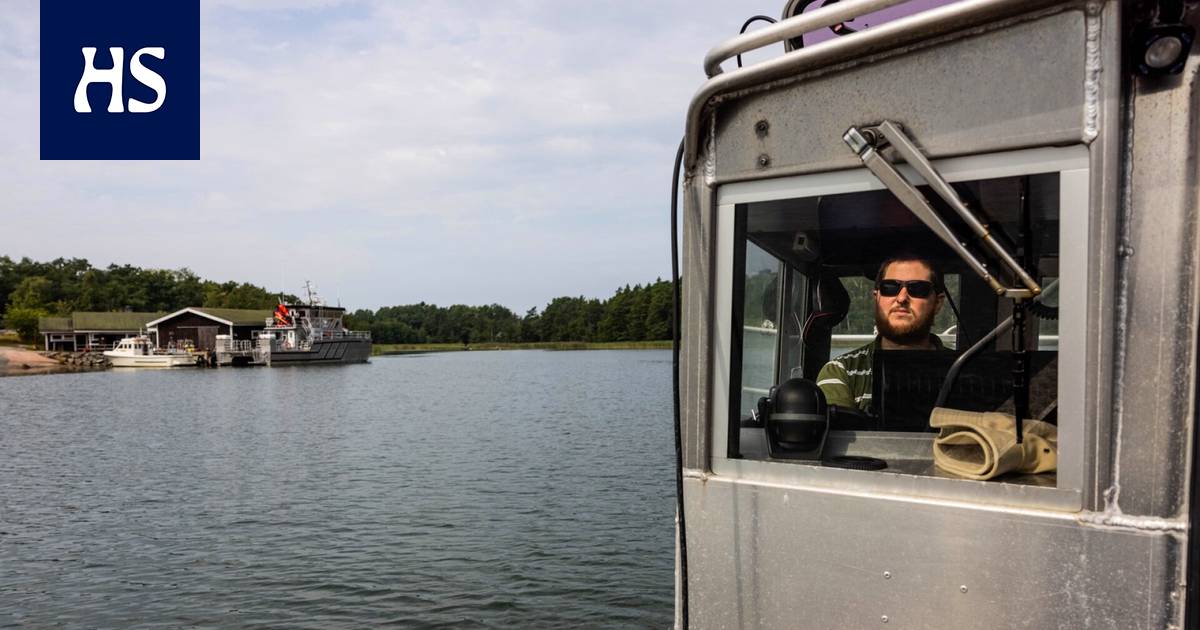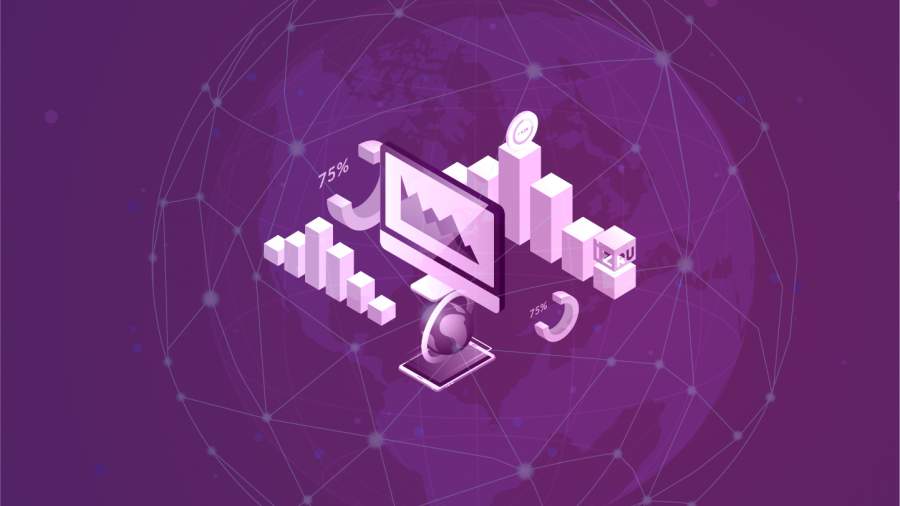There has been a lot of talk about the collapse of carbon sinks in forests, but is the source of climate emissions floating on our shores? The carbon budget of the Baltic Sea is still poorly known.
Seas should be thanked. They have saved us from even worse heat.
About 90 percent of the human-caused warming has been absorbed by the seas.
In addition, the seas are the Earth’s most important carbon sink: they constantly bind carbon dioxide from the air. Without the seas, even more carbon dioxide would accumulate in the atmosphere.
However, the situation may be different in our home corners. Instead of a carbon sink, an emission source may splash onto our shores. The more the Baltic Sea is studied, the more surprising aspects of it are revealed.
With the equipment built in Crangon, Märta Brundberg and Florian Roth get continuous information on the amount of methane, unlike with point samples.
Crangon is slowly bubbling around the Tvärminne research station in Hanko. Kurt Spence steer the boat, Märta Brunberg and Florian Roth following the monitor. Crangon is the scientific name for the sand shrimp, but now we don’t look for them.
When Crangon goes around the cove called Krogarviken, the steady red curve on the monitor starts to rise: the methane concentration is increasing rapidly.
For long it has been known that methane is produced especially in the oxygen-free depths of the Baltic Sea. However, there is a journey from them to the surface, and the methane has time to oxidize on the way and does not have time to reach the atmosphere.
Little Crangon measures greenhouse gases specifically on the coasts. The methane produced in the shallows bubbles up into the atmosphere, because it does not have time to oxidize on the way. A big research vessel has no business in these shallow coves.
“Huge concentrations of methane have been measured in some places, especially near river estuaries. The nutrients that come with the rivers have been talked about for a long time, when the focus has been on eutrophication, but the rivers also come with carbon and even methane dissolved in the river water,” says the Baltic Sea Research professor Alf Norkko About the new measurement results made in Tvärminne.
Professor Alf Norkko is trying to build the Baltic Sea’s annual carbon budget. In the background, Lydia White, Nicolas-Xavier Geilfus and Camilla Gustafsson leaving to dive plant samples.
Tvärminne plays an important role in investigating the climate impact of the Baltic Sea. the research station has its own laboratories. The image analyzes the effect of sea heat waves.
Coasts so they release methane into the atmosphere while the marine environment binds carbon dioxide. Methane is about thirty times more powerful greenhouse gas than carbon dioxide.
When methane enters the atmosphere, it accelerates climate change. Methane emissions have increased worldwide in recent years, which has raised concerns.
Perhaps even more important measurement result is that the amounts of methane vary enormously. The differences can be almost 80 times just a few meters apart.
“The release of carbon dioxide and methane is extremely dynamic, the situation can change even in minutes,” says the docent of marine biology Camilla Gustafsson.
But which one of these is the dominant direction? Climate emissions from the Baltic Sea or the sea’s ability to bind carbon dioxide?
This will be asked on Wednesday, August 24 in the afternoon also on Espa’s stage with the title Baltic Sea – carbon sink or emission source. Alf Norkko, Camilla Gustafsson and the research professor will participate in the expert discussion Markku Viitasalo from the Finnish Environmental Center (Syke). You can see the discussion live on HS.fi at 3 p.m.
Edd Stockdale steers the “Haue” (Esox) out of the pier of the Tvärminne research station. Marine biologists play a key role in determining the carbon balance of the Baltic Sea.
In Tvärminne the Baltic Sea has been measured and monitored for over a hundred years. But the collected information does not give a ready answer to how the Baltic Sea itself or the condition of its habitats affects climate change. Last year, the joint Coastclim research center of the universities of Helsinki and Stockholm was established to solve the question.
As the name implies, Coastclim combines the expertise of both marine scientists and climate scientists.
All this comes together in Tvärminne Hanko. When Crangon is circling the sea, you can see gray atmospheric measurement devices on the nearby islet, and on the shore, the Atmospheric Sciences Center Inari’s white balloons for aerosol measurements. Marine biologists also dive in the same area.
Devices tuned to Crangon measure greenhouse gas concentrations in both air and seawater at the same time. The gas curves are drawn almost in real time on the screen in the ship’s cabin.
This is completely different from a sample taken from the sea, which is taken to a laboratory for analysis. By taking samples, information on greenhouse gases can only be obtained from a certain place at a certain time.
That is why the continuous measurements carried out in Tvärminne are so valuable and exceptional. It is precisely with the help of continuous measurement that huge differences in the climate effect have been discovered even in a small area. The research team has built the equipment and software themselves.
“There is only one other place in the world like this, in Australia,” says Florian Roth.
The monitor shows Florian Roth the greenhouse gas concentrations in the water and air in almost real time. The distinction tells whether the coast is currently a carbon sink or a source of emissions. The exceptional hardware and software is built by the team itself.
To the seabed a lot of carbon has accumulated. The interesting question is what causes carbon to be released, either in the form of carbon dioxide or methane.
One of the inspirations for the methane measurements was the record-breakingly hot summer of 2018, when bottom temperatures of over 25 degrees were measured in front of Tvärminne. Large amounts of methane were also measured.
Warming directly affects the release of methane. The warmer the water, the more methane. In other words, climate change can make the situation worse. And the released methane, in turn, worsens climate change.
The Coastclim project has also found that methane rises to the surface the lower you are and the longer the eutrophication has had time to take effect.
All these factors affect the sheltered Krogarvik cove, so it’s no wonder that the methane curve turns upward. The measurement results are so precise that Florian Roth is able to distinguish different isotopes of methane from the flight. From them, Roth reads that the methane measured from the cove is very fresh, newborn.
“When the measurement results are continuous, accurate and obtained from new environments, there is so much new information that it can shake established perceptions,” says Norkko.
The time of measurement is also of great importance, as greenhouse gases are released all the time, while carbon dioxide is bound especially when plants are in contact, i.e. during the day and summer.
Docent Camilla Gustafsson is preparing for the dive: the purpose is to retrieve bladderwrack from the seabed.
Continuous measurements are not the only special feature of Coastclim. In forming the overall picture, marine biologists and the diversity of marine nature have taken on a big role.
That’s why Camilla Gustafsson and Ph.D Lydia White are now pulling layers and Drysuits on. Esox (the Latin surname of the pike) transports them to the sea, from where they dive for sea bass by the bucketful.
White plans to study the decomposition of bladderworts in the aquarium: how much and how quickly they release dissolved carbon. Later, he plans to continue the same in a field experiment in the sea – to observe how carbon is released from bladder gills at different depths.
Bladder steam is known as an effective carbon sequestrant, but the big question is how permanent the effect is.
“When the habitat is healthy, carbon circulates all the time and the balance is maintained. When the habitat is disturbed, for example due to eutrophication, carbon starts to escape from the cycle and ends up in the atmosphere as well. It doesn’t matter if the carbon is in the ocean as seagrass meadows or bladderwrack, or as methane released into the air. That’s why biodiversity is an important part of the sea’s climate impact,” says Norkko.
The warming brought about by climate change also destabilizes the balance.
“Heat waves in the sea also speed up natural processes, and excess carbon can start to be released,” Norkko points out.
Experiments have shown that an increase in temperature of two degrees can increase the oxygen-free decomposition of organic matter by 40 percent.
In the last three decades, the average temperature has already risen by two degrees.
The organisms of the Baltic Sea have not adapted to too warm conditions. In the hot summer of 2018, large areas of mussels died. Dying organisms eventually end up as climate emissions.
Perennial bladderwort binds a lot of carbon dioxide, but one of the research questions is how permanently.
The polychaete is not only a carbon sink, but a key marine species that provides habitats for numerous other species.
Because everything affects everything, in Tvärminne marine biology, coastal research and atmospheric research and long time series of the 120-year-old research station are tied together.
The end result should be an understanding of the Baltic Sea’s annual carbon budget: is our home sea a carbon sink or a source of emissions.
Either way, the Baltic Sea is neither a sink nor a huge source of emissions, such that it would have a decisive effect on global climate change, says the group leader Tuula Aalto From the Institute of Meteorology.
It still matters.
The climate is changing, and it affects the seas in many ways. We have just experienced a heat wave, even though it is the end of August. When seawater warms and heat waves become more common, this affects the binding and release of greenhouse gases from the sea.
“That’s why it’s important to study the matter, it’s important information for the future”, director of Syke’s marine ecology research laboratory Jukka Seppälä justifies.
Carbon accumulated in the seas and a warming climate are a risky combination.
Discussion on the topic Baltic Sea – carbon sink or emission source live on HS.fi on Wednesday, August 24, from 3 to 4:30 p.m. The issue is being considered by Baltic Sea Research Professor Alf Norkko and Marine Biology Docent Camilla Gustafsson from the University of Helsinki, and Markku Viitasalo, Research Professor of Sustainable Use of the Seas from the Finnish Environment Institute. The discussion will be led by Piia Elonen, HS environmental producer. In addition to HS.fi, you can follow the debate live on Espa’s stage.
Baltic Sea Day is celebrated on Thursday, August 25.
#Environment #Baltic #Sea #feared #huge #source #methane #Huge #concentrations #measured #places



/s3/static.nrc.nl/images/gn4/stripped/data114514500-396238.jpg)





